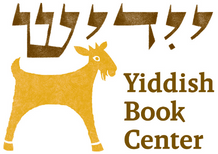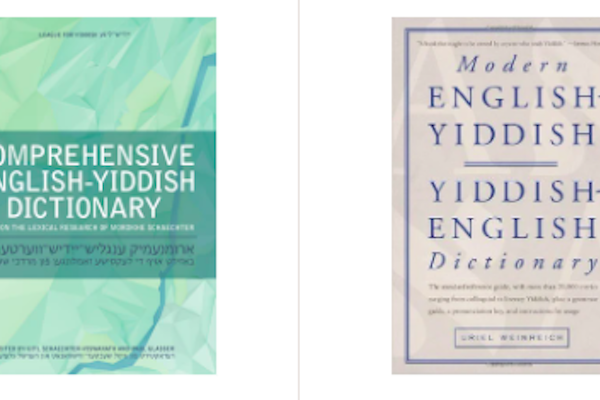Yiddish Dictionaries, Large and Small
By Sophia Shoulson, Yiddish Book Center fellow
The Yiddish Book Center’s collection includes dictionaries of all shapes, sizes, and formats: Yiddish only, Yiddish-Hebrew, and many that are Yiddish-English, English-Yiddish, or both.
Here's an introduction to two dictionaries that stand out as the smallest and largest in the collection: the Liliput English-Yiddish dictionary and Paul Abelson’s Encyclopedic Dictionary.
We actually have two versions of the Yiddish Liliput in our collection—one is English-Yiddish and the other is Yiddish-English. Both were written by Zina Horowitz and published by the Minkus Bros. sometime between 1910 and 1929 (there’s no publication date listed, and we’ve found conflicting information about the actual date). The Liliput dictionary measures in at approximately 1.5 by 2 inches. But while its size is very small, its content is not: its 621 pages contain 12,000 words, along with several mock dialogues and thematic vocabulary lists. These are “pocket dictionaries” in the purest sense of the term, and though they now seem like more of a novelty item, they were clearly meant for people on the go.
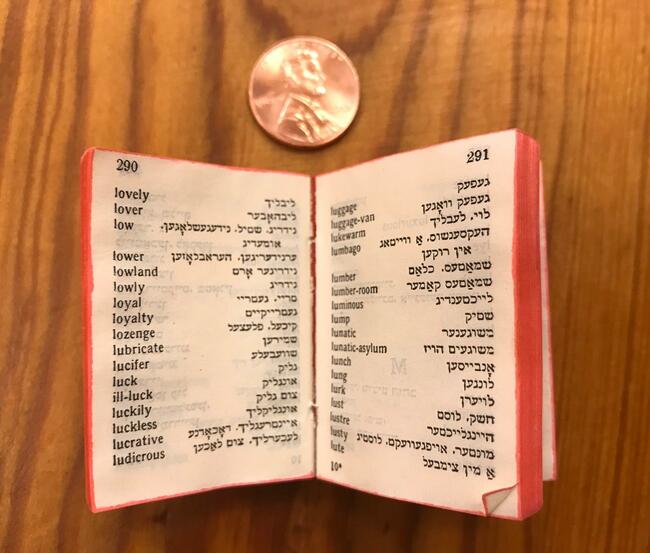
The Encyclopedic Dictionary, meanwhile, is far less portable. In fact, the Yiddish Book Center’s reference copy of this tome is kept on its own shtender (bookstand). First published by the Jewish Press Publishing Co. in 1915, the Encyclopedic Dictionary was intended as a “treasure-house of world culture” (viii). In its 1,749 pages, the dictionary’s editors and publishers hoped to provide “the more cultured type of immigrant” with translations, definitions, and pronunciation guides for English words in all scientific fields (Sapir 141).
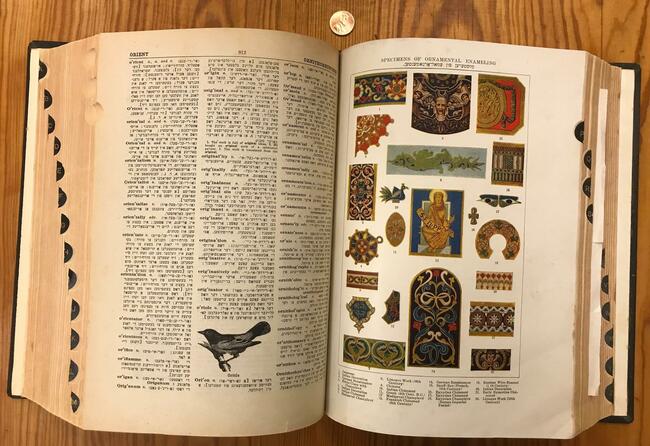
In addition to the black and white illustrations interspersed among the entries, the dictionary also contains beautiful color plates with diagrams, maps, graphs, and more-detailed illustrations of some of the subjects covered. This was not a dictionary one could carry in one’s briefcase, much less in one’s pocket!
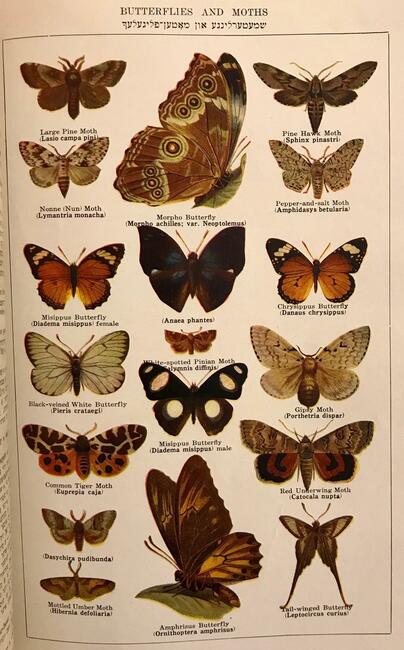
Clearly these two dictionaries were designed to be used in different ways. One could be carried anywhere and consulted quickly and discreetly, while the other was clearly meant to be displayed, to make a statement about the value of knowledge. We wanted to find a way to directly compare the strengths and weaknesses of the two dictionaries, so we decided to choose one text to translate using both. In order to make the comparison even more interesting, we chose a text that has already been translated into Yiddish: Charles Darwin’s The Descent of Man. We determined that the first paragraph of Darwin’s famous text is scientific enough that it would highlight the unique uses of the Encyclopedic Dictionary while discussing a broad enough subject that the Liliput’s 12,000 words would also be relevant.
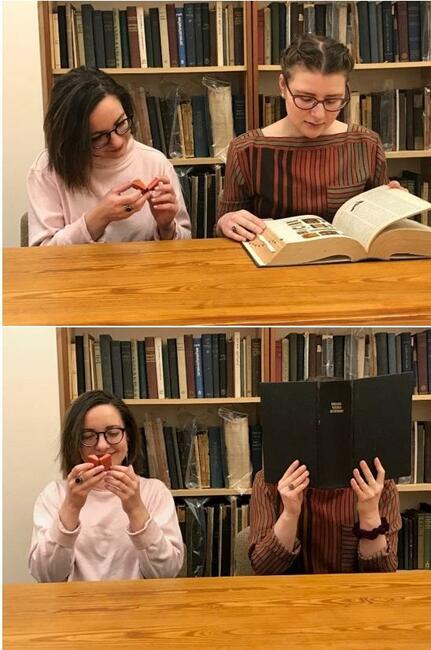
I carefully studied the first paragraph of Chapter 1 of Darwin’s The Descent of Man, in English. I chose thirteen words to translate, using the two dictionaries. Finally, after locating (or failing to locate) all of the words in the dictionaries, I found the corresponding words in Dr. Y. A Merison’s Yiddish translation of The Descent of Man, Di opshtamung fun mentshn.
The results illustrate the different purposes for which these dictionaries were produced. The Descent of Man is a scientific text, and the Liliput dictionary, intended for colloquial, conversational use, contained no entries for three of the thirteen chosen words (generation, organism, and structure). The Encyclopedic Dictionary contained entries for each chosen word (or a form of each chosen word), but each entry derives from the more “scientific” languages of German, or Greek and Latin by way of German. The term generation is particularly telling. The Encyclopedic Dictionary translates generation as frikhperung or fermehrung—Germanic terms for the literal act or event of generating. In his edition of the text, Merison translates generation as dor, a common Yiddish word of Hebraic origin. The Liliput contains no entry for the word. Evidently, the Liliput would be quite useless for translating a scientific paper, and the Encyclopedic Dictionary would be equally useless for conducting a conversation on the street!
Below is a breakdown of all thirteen terms and translations, with a color-coded key for languages of origin.
